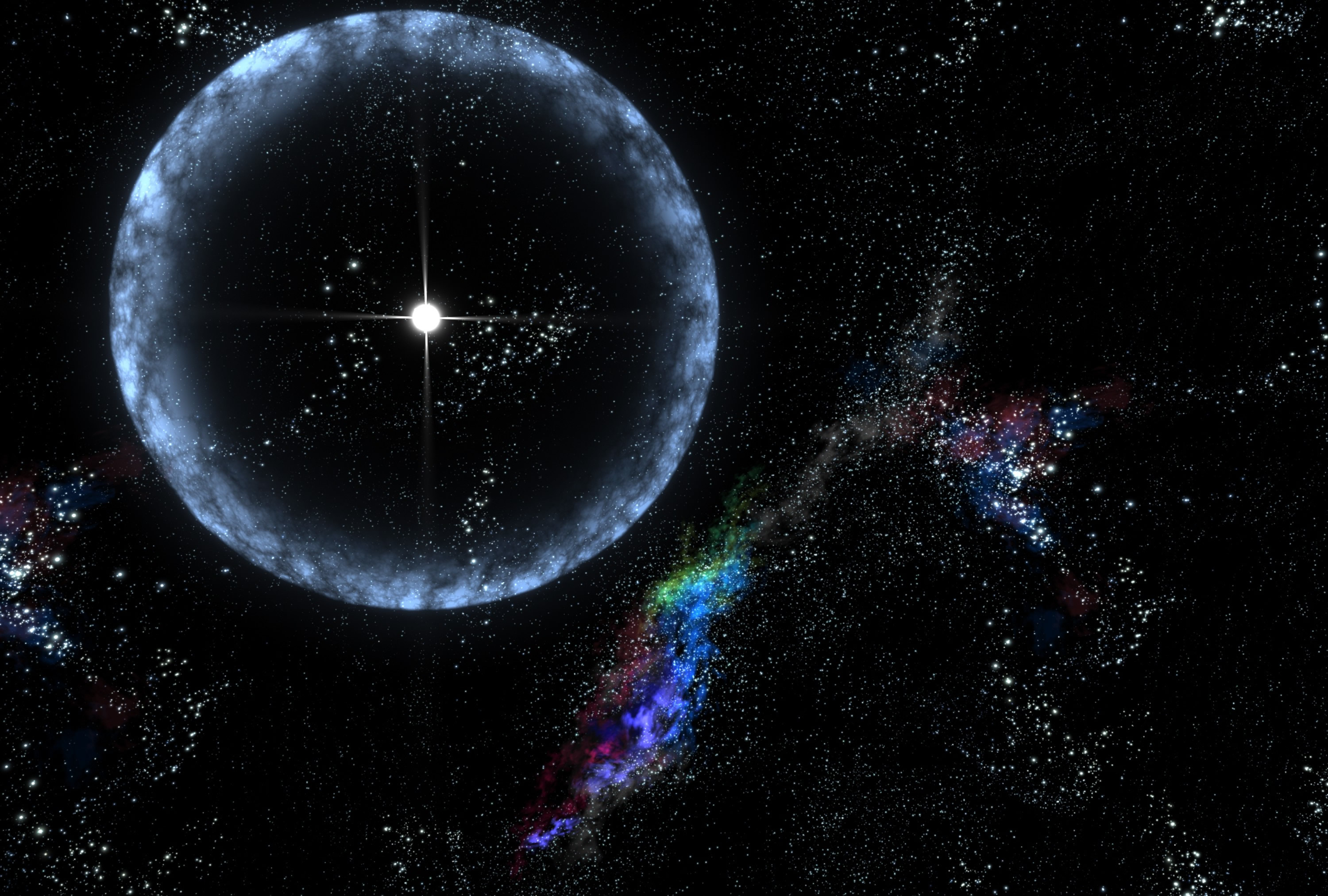Wednesday, July 13, 2005
Hammer In The Sky

Scientists studying massive explosions flaring from a neutron star some 50,000 light years away say the blasts could serve as a powerful new tool for probing the guts of these enigmatic cosmic beasts.
Neutron stars are the last rung on the ladder leading a collapsing star to a black hole. Astrophysicist Fred Zwicky, who have coined the name neutron star, was the first to calculate in the 1930s that gigantic internal pressures in such stars push electrons inside atomic nuclei where protons gobble them up to form neutrons. The density is so huge, some million billion grams per cubic centimeter, that it squeezes the failing star into a sphere with a diameter of just 12 miles. Yet despite further work by Oppenheimer, Wheeler and many others, seven decades after Zwicky's discovery neutron stars hold on to a lot of their mystery, with scientists trying to decipher the details their internal structure.
Now they may get some help from a powerful X-blasts emanating from the neutron star SGR 1806-20, which were recorded last December. Scientists from the University of California San Diego, Italy's National Institute of Astrophysics, Israel and the Netherlands have tried to use the explosions, which in just a fraction a second released more energy than the sun emits in 150,000 years, to learn about what neutron stars look like inside.
"This explosion was akin to hitting the neutron star with a gigantic hammer, causing it to ring like a bell," said Richard Rothschild, an astrophysicist at the University of California's Center for Astrophysics and Space Sciences and one of the authors of the journal report. "Now the question is, What does the frequency of the neutron star's oscillations - the tone produced by the ringing bell - mean?," he asked in a press release.
"Does it mean neutron stars are just a bunch of neutrons packed together? Or do neutron stars have exotic particles, like quarks, at their centers as many scientists believe? And how does the crust of a neutron star float on top of its superfluid core? This is a rare opportunity for astrophysicists to study the interior of a neutron star, because we finally have some data theoreticians can chew on. Hopefully, they'll be able to tell us what this all means."
Where did the hammer come from? The astrophysicists suspect, the release said, that "the burst of gamma-ray and X-ray radiation from this unusually large explosion could have come from a highly twisted magnetic field surrounding the neutron star that suddenly snapped, creating a titanic quake on the neutron star.
"The scenario was probably analogous to a twisted rubber band that finally broke and in the process released a tremendous amount of energy," said Rothschild. "With this energy release, the magnetic field surrounding the magnetar was presumably able to relax to a more stable configuration."
The research for published in the current issue of the Astrophysical Journal.
Image: Artist's conception of the December 27, 2004 gamma ray flare expanding from SGR 1806-20. Credit: NASA